Related Research Articles

Moulay Ismail Ibn Sharif, born around 1645 in Sijilmassa and died on 22 March 1727 at Meknes, was a Sultan of Morocco from 1672 to 1727, as the second ruler of the 'Alawi dynasty. He was the seventh son of Moulay Sharif and was governor of the province of Fez and the north of Morocco from 1667 until the death of his half-brother, Sultan Moulay Rashid in 1672. He was proclaimed sultan at Fez, but spent several years in conflict with his nephew Moulay Ahmed ben Mehrez, who also claimed the throne, until the latter's death in 1687. Moulay Ismail's 55-year reign is the longest of any sultan of Morocco. During his lifetime, Moulay amassed a harem of over 500 women with more than 800 confirmed biological children, making him one of the most prodigious fathers in recorded history.

Tunisian Arabic, or simply Tunisian,, is variety of Arabic spoken in Tunisia. It is known among its 12 million speakers as Tūnsi, "Tunisian" or Derja to distinguish it from Modern Standard Arabic, the official language of Tunisia. Tunisian Arabic is mostly similar to eastern Algerian Arabic and western Libyan Arabic.
Aida is an opera by Giuseppe Verdi.
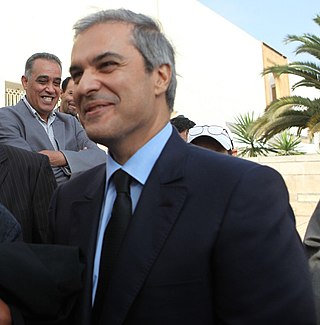
Prince Moulay Hicham of Morocco is the first cousin of King Mohammed VI and Prince Moulay Rachid. He is the son of Prince Moulay Abdallah of Morocco, the late brother of the late King Hassan II, and Princess Lalla Lamia Solh, daughter of Riad Al Solh, the first Prime Minister of Lebanon. He is also the cousin of Prince Al-Waleed bin Talal of Saudi Arabia, whose mother Mona Al Solh is another daughter of the Lebanese family. Under the Moroccan constitution, Moulay Hicham stands fifth in the line of succession to the Alaouite throne.
The Arabic language family is divided into several categories which are: Old Arabic, the literary varieties, and the modern vernaculars.

George Grigore is a Romanian writer, essayist, translator, professor, researcher in Middle Eastern Studies.

Central Atlas Tamazight or Atlasic is a Berber language of the Afroasiatic language family spoken by 2.3 million in the Atlas Mountains of Central Morocco as well as by smaller emigrant communities in France and elsewhere.
Judeo-Tunisian Arabic, also known as Judeo-Tunisian, is a variety of Tunisian Arabic mainly spoken by Jews living or formerly living in Tunisia. Speakers are older adults, and the younger generation has only a passive knowledge of the language.
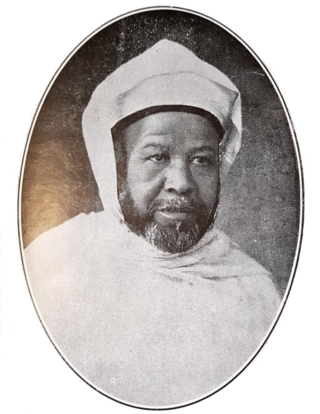
Abd al-Rahman ibn Zaydan was a Moroccan historian and literary author. He was a member of the ruling 'Alawi dynasty and is considered one of the best sources on the history of his native city Meknes, but also on the 'Alawi dynasty. After the installation of the French protectorate he accepted the function of vice-director of the military school of Dâr al-Bayda in Meknes, today's military academy of the city. The Ithaf, his main work of eight volumes, comprehends hundreds of biographies, like those of the sultans Abderrahman and Hassan I.
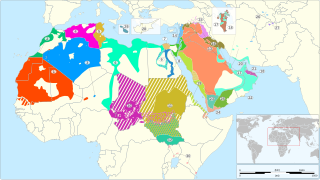
Varieties of Arabic are the linguistic systems that Arabic speakers speak natively. Arabic is a Semitic language within the Afroasiatic family that originated in the Arabian Peninsula. There are considerable variations from region to region, with degrees of mutual intelligibility that are often related to geographical distance and some that are mutually unintelligible. Many aspects of the variability attested to in these modern variants can be found in the ancient Arabic dialects in the peninsula. Likewise, many of the features that characterize the various modern variants can be attributed to the original settler dialects as well as local native languages and dialects. Some organizations, such as SIL International, consider these approximately 30 different varieties to be separate languages, while others, such as the Library of Congress, consider them all to be dialects of Arabic.
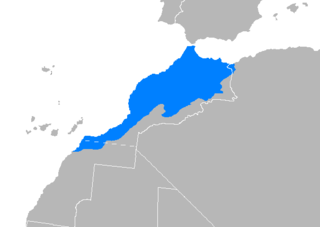
Moroccan Arabic, also known as Darija (الدارجة), is the dialectal, vernacular form or forms of Arabic spoken in Morocco. It is part of the Maghrebi Arabic dialect continuum and as such is mutually intelligible to some extent with Algerian Arabic and to a lesser extent with Tunisian Arabic. It is spoken by 90.9% of the population of Morocco. While Modern Standard Arabic is used to varying degrees in formal situations such as religious sermons, books, newspapers, government communications, news broadcasts and political talk shows, Moroccan Arabic is the predominant spoken language of the country and has a strong presence in Moroccan television entertainment, cinema and commercial advertising. Moroccan Arabic has many regional dialects and accents as well, with its mainstream dialect being the one used in Casablanca, Rabat, Tangier, Marrakesh and Fez, and therefore it dominates the media and eclipses most of the other regional accents.
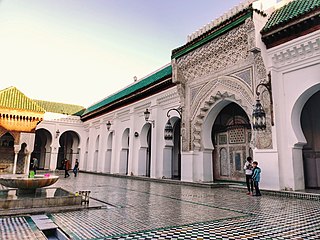
Fez or Fes is a city in northern inland Morocco and the capital of the Fès-Meknès administrative region. It is the second largest city in Morocco, with a population of 1.11 million according to the 2014 census. Located to the northwest of the Atlas Mountains, it is surrounded by hills and the old city is centered around the Fez River flowing from west to east. Fez has been called the "Mecca of the West" and the "Athens of Africa." It is also considered the spiritual and cultural capital of Morocco.

Moha Ennaji ; is a Moroccan linguist, author, political critic, and civil society activist. He is a university professor in the Department of English Language and Literature at Sidi Mohamed Ben Abdellah University at Fes, where he has worked for over 30 years. In addition to his publications in linguistics, he has written on language, education, migration, politics, and gender, and is the author or editor of over 20 books.
The following is a timeline of the history of the city of Rabat, Morocco.

Hakima El Haite is a Moroccan climate scientist, entrepreneur and politician. In 1994 she founded EauGlobe, the first environmental engineering firm in the MENA region. She served as Minister Delegate in Charge of the Environment for the Kingdom of Morocco from 2013 to 2017. In 2015, she was elected Vice President of United National International Climate Conference (COP21). She was appointed Special Envoy for Climate Change of the Kingdom of Morocco from 2015 to 2017 and the High Level Climate Champion of the United Nations International Climate Conference (COP22) in 2016 – 2017.
The following is a timeline of the history of the city of Meknes, Morocco.
Eastern Morocco Arabic or Oujda Darija is a dialectal continuum of Hilalian Arabic, mainly spoken in Oujda area and in a part of Oriental region of Morocco.
Mena B. Lafkioui is a linguist specializing in Berber languages. She is currently Research Director at the French National Centre for Scientific Research and Professor of Berber Linguistics at the School for Advanced Studies in the Social Sciences.

Abderrahim Berrada was a Moroccan lawyer and human rights activist.
Martine Vanhove is a French linguist, Research Director emerita at LLACAN (CNRS), specializing in Cushitic and Semitic languages spoken in Djibouti, Yemen and Malta.
References
- ↑ "AIDA - Association Internationale de Dialectologie Arabe" . Retrieved 20 August 2016.
- ↑ "Arabic Dialectology" (PDF). mohamedrabeea.com. Archived from the original (PDF) on 4 March 2016. Retrieved 28 March 2014.
- ↑ Grigore, George (2022). "A Bibliography of Association Internationale de Dialectologie Arabe" . Retrieved 28 June 2022.
- ↑ "AIDA - Association Internationale de Dialectologie Arabe ..." independent.academia.edu. Retrieved 28 March 2014.